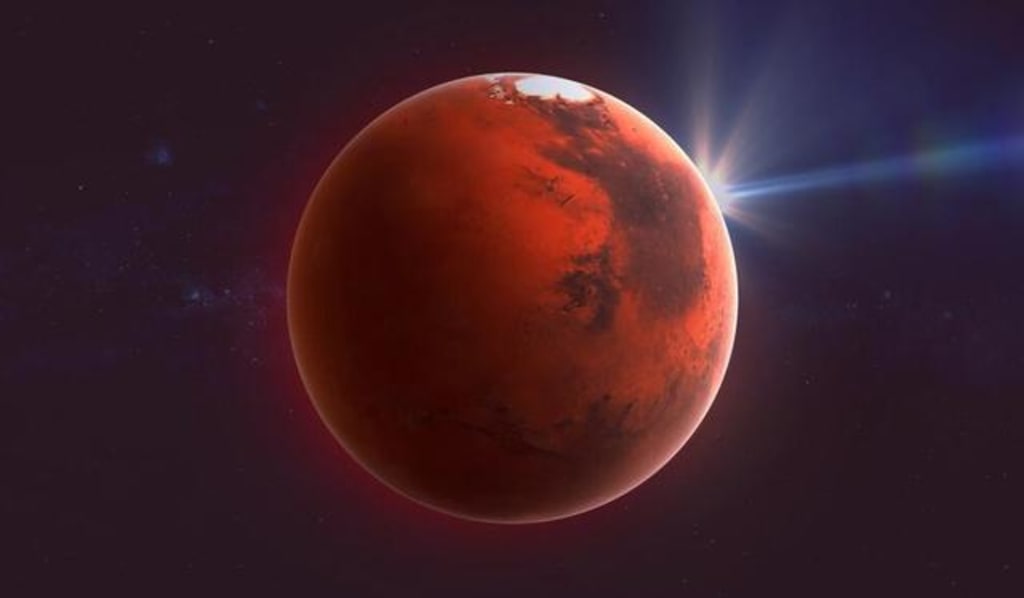Fly from Earth to Venus in 100 days
Why would humans give up on landing on Venus?

The dream of mankind is the sea of stars, and the first step to realizing this dream should be to land on other planets, even if mankind cannot go there personally, it is possible to launch some probes. In the solar system, Venus and Mars are both planets adjacent to the Earth, where the closest distance between Venus and the Earth is about 40.5 million kilometers, while the closest distance between Mars and the Earth is about 55 million kilometers.
In comparison, it should be easier to land on Venus. Theoretically speaking, it only takes 100 days for a human-launched probe to fly from Earth to Venus, but in recent years, humans are only keen on landing on Mars but have no interest in landing on Venus. Why would humans give up on landing on Venus? Let's talk about this topic.
In our human eyes, Venus is the brightest object in the sky except for the Sun and the Moon, so we have been paying extra attention to Venus for a long time.
With the increasing level of observation, humans gradually realized that Venus is a rocky planet very close to the Earth, and its volume, mass, and density are very close to those of the Earth, which undoubtedly further increased the attention of humans to Venus, and people even optimistically speculated that Venus is likely to be a vibrant planet like the Earth.
However, Venus has a dense atmosphere, which led to the fact that humans on Earth can not see the surface of Venus at all with telescopes alone, so everyone is looking forward to being able to launch a probe to Venus.
In 1961, the Soviet Union launched the first human Venus probe, Venus 1, but unfortunately, the mission failed because the sensor on the sun-facing side of the probe overheated, but it also started the human exploration of Venus. But this also started the prelude of human exploration of Venus.
In 1962, the U.S. launched Mariner 2, which became the first probe to successfully fly by Venus, and its closest distance to Venus was less than 35,000 kilometers during the flyby. However, the data returned by Mariner 2 showed that the surface temperature of the planet was as high as 400 degrees Celsius, which is not suitable for life and is undoubtedly very disappointing.
Nevertheless, in the following days, the United States and the former Soviet Union still launched dozens of probes to Venus, and the former Soviet Union also conducted a series of missions to land on Venus. Between 1961 and 1983, the former Soviet Union launched 28 Venus probes, 13 of which entered the atmosphere of Venus, and 8 of which successfully landed on the surface of Venus.
The measured data from these probes show that Venus has an extremely dense atmosphere, so much so that it's surface atmospheric pressure is about 92 times that of Earth (which is roughly equivalent to the pressure of Earth's oceans at a depth of 900 meters).
The main gas in Venus' atmosphere is carbon dioxide, which accounts for about 96.5% of its atmospheric mass, while the rest of the gas is mostly nitrogen, with traces of other gases (such as sulfur dioxide).
A large amount of carbon dioxide on Venus produces the strongest greenhouse effect in the solar system, resulting in an average temperature of 464 degrees Celsius on the surface of Venus, so high that it even exceeds the melting point of some metals (such as lead), so liquid water can't exist on the surface of Venus.
What's more, the surface of Venus is isothermal, whether it is the equator or the poles, the mountains or the valleys, its temperature is similar to 464 degrees Celsius, which means that there is no "cool place" on Venus, no matter where the probe lands on the surface of Venus, it can't escape from the high temperature.
In addition, there is also a large amount of sulfuric acid in the thick clouds of Venus, and this sulfuric acid will condense into "raindrops" from time to time, and these "sulfuric acid rains" will evaporate before falling to the ground due to the high temperature of the surface of Venus. As this process is repeated, a large acidic environment is formed in the near-Earth space of Venus.
The high temperature, high pressure, and high corrosiveness make the natural environment on Venus so harsh that it has been described as a "hell planet". On such a planet, not to mention humans, even sturdy probes can not last long. In fact, among the eight probes that successfully landed on Venus mentioned earlier, the longest one, Venus 13, only lasted 127 minutes on the surface of Venus.
Thus we can clearly see that the risk of landing on Venus is very high, but the reward is very small, after all, each probe requires a lot of human and material resources. Because of this, after the 1980s, mankind gave up landing on Venus, and the only two ways to explore Venus at close range are flyby and orbit, and, predictably, mankind will not restart the mission to land on Venus until technology develops enough to cope with the harsh environment on Venus.
Compared with Venus, Mars is much better, although Mars is farther away and its natural environment is not friendly to humans, human probes can work here for a long time, and with the current technology, humans can also build a closed base on Mars for a long time, so of course, Mars has become the first target for humans to land on other planets, and perhaps shortly, the human figure can appear on Mars.
About the Creator
Robert Jack
One of the secrets of emotional stability for adults is to keep the expectations of others to a minimum.
Enjoyed the story? Support the Creator.
Subscribe for free to receive all their stories in your feed. You could also pledge your support or give them a one-off tip, letting them know you appreciate their work.






Comments
There are no comments for this story
Be the first to respond and start the conversation.